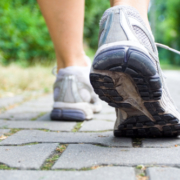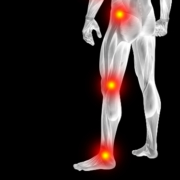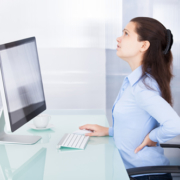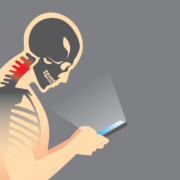3 Health Benefits Walking Provides To Your Spine
You hear a lot of people talk about the benefits of walking, but may not know how it applies to you. If you have back pain, walking regularly can be exceptionally helpful by providing the spine with added support and increased blood flow. These three spinal health benefits of walking should be enough to convince you.
Walking Aids in Rehydrating Your Spinal Discs
Gravity is not your friend. Well, not when it comes to your back. From the time you get out of bed until you lay down again at the end of the day, the pressure of gravity compresses your spine. When your spine is compressed that means your spinal discs are too. These fluid filled discs provide cushion for your vertebrae, but the constant compression that occurs throughout the day due to normal activity squeezes out the fluid out of them.
Dehydrated discs can cause back pain and structural problems. That is why restful sleep and staying hydrated are extremely important for spinal health.
Walking is also important because it increases circulation throughout your body, including your spine. This increased blood flow helps to rehydrate your discs which improves your spinal health. It also helps keep your spine younger, staving off the effects of the aging process.
Walking Relieves Back Pain and Reduces Stress to the Spine
Walking provides a great low impact aerobic workout. It increases blood flow which helps improve mobility, flexibility, and range of motion. When you incorporate stretching, you can reap even more of the benefits of a healthy spine.
The human body is made to move. When you don’t move or are sedentary, your muscles become stiff and inflexible. Moving prevents that, but even if you are experiencing some stiffness walking, stretching, and movement can help you regain that flexibility.
You will also find that walking regularly also helps with stress relief. Lower back pain is a very common stress symptom but walking combats it effects by encouraging the release of dopamine.
When you are stressed, your pain sensitivity is increased. You feel pain more acutely and it is more difficult to manage. By reducing your stress level, you also make your pain more manageable but at the same time, minimize lower back pain.
Walking Improves Posture
When you don’t use your muscles, they become weak and inflexible – and are not able to do their intended job. The muscles of the back are designed to provide support to the spine. When they are not used they can atrophy and weaken, resulting in stooped or other improper posture.
Poor posture causes back pain by putting more pressure on the spine. This can lead to pain, soreness, tension, and headaches. Without the necessary support, it can also lead to misalignment of the spine which can cause a number of problems.
Walking strengthens the supporting muscle groups so that your back muscles get stronger. Your spine gets the structural support that it needs. As your back muscles get stronger your body will naturally begin to adopt a correct posture. The benefits of good posture include improved organ function, reduced pain, less fatigue, and easier breathing.
Walking is good for your whole body as well as your mind. When you walk to reduce back pain you are also doing great things for your body. If you have any questions about proper form or how to achieve better, healthier posture, your chiropractor can help you. The spine is such an important part of the body; it does so much. Do your best to protect it and keep it in good health. In return, it will keep you moving for a long, long time.










